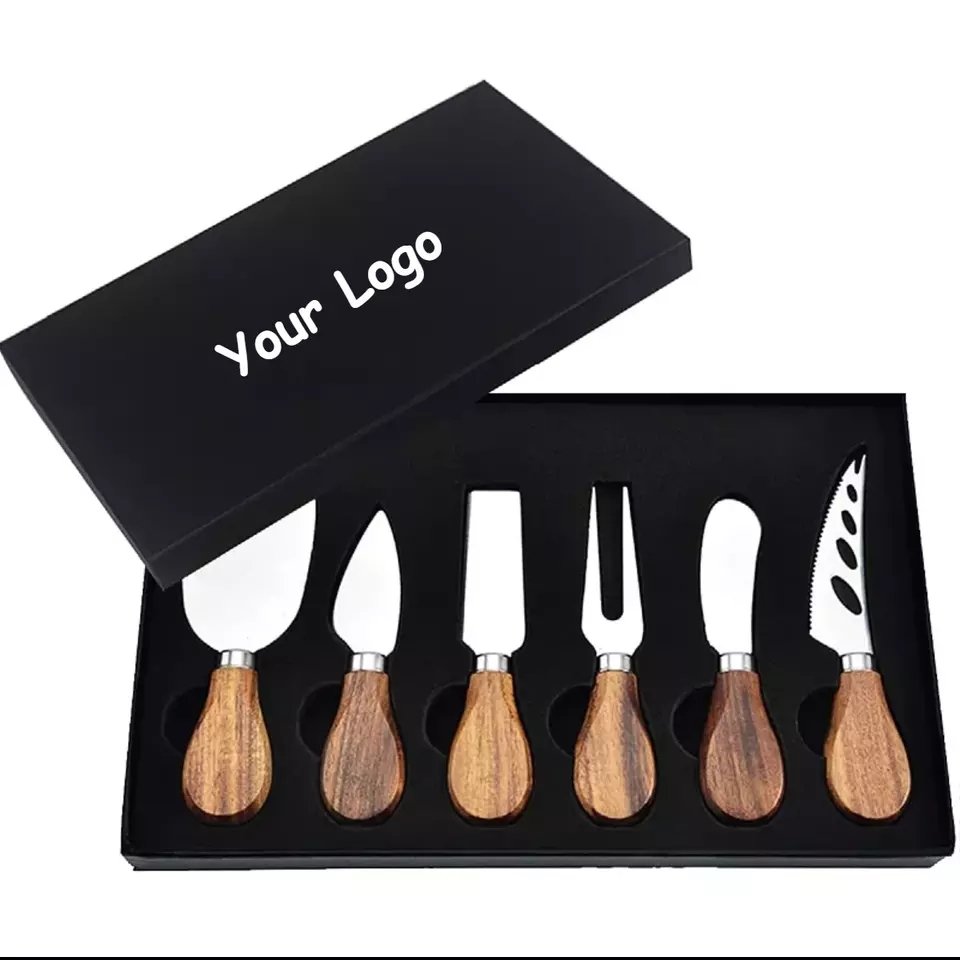Stainless steel cutlery is taking over traditional dining tables across the Middle East and South America. If you’re wondering why—it’s not just about the shine.
Middle Eastern and South American restaurants are choosing stainless steel cutlery for its durability, hygiene, and modern appeal. It reflects both their cultural pride and their business priorities.
The shift isn’t accidental. It’s a business decision that bridges style, cost-efficiency, and practicality. As a supplier, I’ve seen this transition up close, and in this article, I’ll walk you through what’s really driving it.
What are the disadvantages of stainless steel cutlery?
Many people think stainless steel is perfect. But even this material has its downsides, especially when used in bulk.
The main disadvantages of stainless steel cutlery are its heat conductivity, potential for water spots, and occasional lack of weight variation.
When choosing materials for restaurant cutlery, knowing the disadvantages helps make a better business call.
1. Thermal Conductivity & Temperature Sensitivity
Stainless steel can get uncomfortably hot or cold, especially in outdoor restaurants or places serving hot soups and sizzling platters.
2. Water Spots and Maintenance Needs
It may be called “stainless”, but it’s not truly stain-proof. In areas with hard water, like parts of Argentina or Jordan, spots can appear after dishwashing.
3. Weight Uniformity – Good or Bad?
For restaurants wanting to express identity through tactile feel, stainless steel may seem too uniform. Wooden or ceramic handles offer personality—stainless steel can feel “cold” or too modern.
⚠️ Minor Disadvantages of Stainless Steel Cutlery (and How Restaurants Handle Them)
| Disadvantage | Cause | Impact in Restaurants | Mitigation Methods |
|---|---|---|---|
| 🔥 Heat Sensitivity | High thermal conductivity | Can feel hot or cold to touch — especially for children | Use thicker handles, add silicone or insulated tips |
| 💧 Water Stains | Hard water deposits, air drying | Leaves spots and dullness on surface | Use soft rinse agents, microfiber drying cloths |
| ⚖️ Lack of Weight Variety | Uniform metal density | Flat sensory feel, especially in upscale dining | Add resin/wood inlays or weight-balanced mixed designs |
Still, none of these are fatal flaws. In fact, the advantages easily outweigh the drawbacks in many restaurant settings.

Why do they use stainless steel in restaurants?
This isn’t about trendiness. It’s about function and economy.
Restaurants use stainless steel because it’s durable, easy to clean, and able to withstand heavy daily use without losing appearance or function.
Let’s break it down from the restaurant owner’s point of view:
1. Hygiene and Cleanliness
This is the biggest reason. Stainless steel doesn’t absorb smells, flavors, or bacteria—unlike wood or plastic alternatives.
2. Longevity and ROI
Buying cutlery isn’t a one-time decision—it’s an investment. Stainless steel lasts much longer than aluminum or disposable plastics.
3. Brand Image
Customers in modern dining spaces expect shine, weight, and balance. Stainless steel delivers a premium feeling with low maintenance.
✅ Key Benefits of Stainless Steel Cutlery for Restaurants
| Benefit | Why It Matters | Impact on Restaurant Operations |
|---|---|---|
| 🧼 Easy Sanitization | Meets strict food safety regulations | Reduces risk of violations, improves hygiene ratings |
| 💰 Low Replacement Rate | Highly durable—resists rust, bending, or breakage | Lowers long-term costs, reduces waste and procurement cycles |
| ✨ Compatible with Décor | Offers a clean, modern, and professional look | Elevates table aesthetics, enhances customer experience |
From a practical lens, stainless steel is a quiet hero in daily restaurant operations.
Why is stainless steel used for cutlery instead of iron?
Iron may sound strong—but in reality, it doesn’t stand a chance in the kitchen.
Stainless steel is used instead of iron because it resists rust, doesn’t react with acidic foods, and is lighter and more cost-efficient in the long run.
Iron had its moment in history—but stainless steel stole the spotlight.
1. Corrosion Resistance
Iron rusts quickly when exposed to moisture and oxygen. Stainless steel contains chromium, which forms a protective layer and prevents rusting.
2. Health and Safety
Iron can react with acidic foods like tomatoes or citrus. This reaction not only changes the flavor but may also be harmful over time.
3. Production and Cost
Iron is heavy, harder to mold, and more energy-intensive to process. Stainless steel, especially in 18/0 or 18/10 grades, can be precision-pressed at scale.
🔍 Iron vs. Stainless Steel: Material Comparison for Cutlery
| Feature | Iron | Stainless Steel |
|---|---|---|
| 🛡️ Rust Resistance | Poor – prone to oxidation and corrosion | Excellent – resists rust even after washing |
| 🧪 Reaction with Food | Common – may alter taste or color | Very rare – non-reactive, food-safe |
| 🏭 Manufacturing Ease | Lower – requires seasoning, more brittle | Higher – ideal for mass production |
| ✨ Appearance After Use | Develops patina or rust over time | Maintains shine, easy to re-polish |
So while iron may have that “vintage” appeal, stainless steel wins in every practical way.
When did stainless steel cutlery become popular?
Trends don’t happen overnight. This one started nearly a century ago.
Stainless steel cutlery gained popularity in the mid-20th century when mass production and hygiene awareness aligned.
Let’s time travel.
1. Early 1900s – The Invention
Harry Brearley invented stainless steel in 1913 in Sheffield, England. Initially used for gun barrels, the material quickly showed promise in food applications.
2. Post-WWII Expansion
After World War II, economies began rebuilding. Mass production took off, and stainless steel flatware entered households and restaurants across Europe and the Americas.
3. Global Commercial Adoption
By the 1970s, stainless steel became the go-to material for kitchens and dining. Its mix of hygiene, cost-efficiency, and polish made it unbeatable.
🕰️ Key Milestones in the Development of Stainless Steel Cutlery
| Period | Milestone | Impact on Cutlery Use |
|---|---|---|
| 1913 | Invention of stainless steel (UK) | Provided the foundation for rust-resistant utensils |
| 1940s–1950s | First mass production of stainless cutlery | Began replacing silver-plated and pewter utensils |
| 1970s–Today | Widespread global commercial use | Became the standard in restaurants, hotels, and homes |
So what feels like a “new” shift is actually a century in the making.

What are the disadvantages of cooking with stainless steel?
We’ve talked about cutlery. But what if the whole kitchen is stainless?
Stainless steel cookware can have uneven heat distribution, sticking issues with food, and a learning curve for chefs used to non-stick pans.
Restaurants use stainless steel for countertops and utensils, but cooking with it needs more skill.
1. Hotspots and Uneven Heat
Especially with cheaper stainless pots or thin cookware, heat doesn’t always distribute evenly.
2. No Natural Non-Stick Layer
Unless it’s bonded with aluminum or treated specially, food may stick easily. That’s annoying for fast-paced cooking.
3. Price vs. Performance
High-quality stainless cookware can be expensive. In places with limited budget, alternatives like cast iron or aluminum may seem better.
🔍 Stainless Steel Cookware: Common Drawbacks & How Restaurants Solve Them
| Disadvantage | How It Manifests | How Restaurants Handle It |
|---|---|---|
| 🔥 Uneven Cooking | Hot spots causing burns or undercooked areas | Use tri-ply or 5-ply clad stainless pans with aluminum core |
| 🍳 Food Sticking | Wasted time scrubbing pans | Proper preheating, oiling, and temperature control |
| 💰 Higher Upfront Cost | Impacts equipment budget | Invest in high-use essentials only (e.g., pans, stock pots) |
In short, stainless steel is great—but not effortless.
Does a commercial kitchen have to be stainless steel?
Not legally. But practically, yes.
While not mandatory, stainless steel is the most recommended material in commercial kitchens for hygiene, durability, and compliance with safety regulations.
It’s about what works best, not what’s required by law.
1. Food Safety Compliance
Health departments in most countries (like Saudi Arabia, Chile, or Brazil) favor stainless because it’s non-porous and easy to sanitize.
2. Durability in Heavy Use
Plastic or wooden counters break down faster. Stainless counters, shelves, and sinks can last decades.
3. Cleanroom Effect
The bright, reflective look of stainless kitchens also gives diners confidence in cleanliness—even if they never see the kitchen directly.
🧱 Material Comparison for Commercial Kitchen Applications
| Material | Common Use Areas | Pros | Cons |
|---|---|---|---|
| 🥇 Stainless Steel | Counters, sinks, cabinets | Hygienic, durable, corrosion-resistant, professional look | Higher upfront cost |
| 🌲 Wood | Storage shelves, decorative trims | Warm, natural aesthetic | Harder to clean, absorbs moisture/grease |
| 🧴 Plastic/Laminate | Storage bins, lightweight panels | Low-cost, lightweight, easy to shape | Low heat/chemical resistance, not long-lasting |
So while not written in law, the stainless choice is written in best practice.





